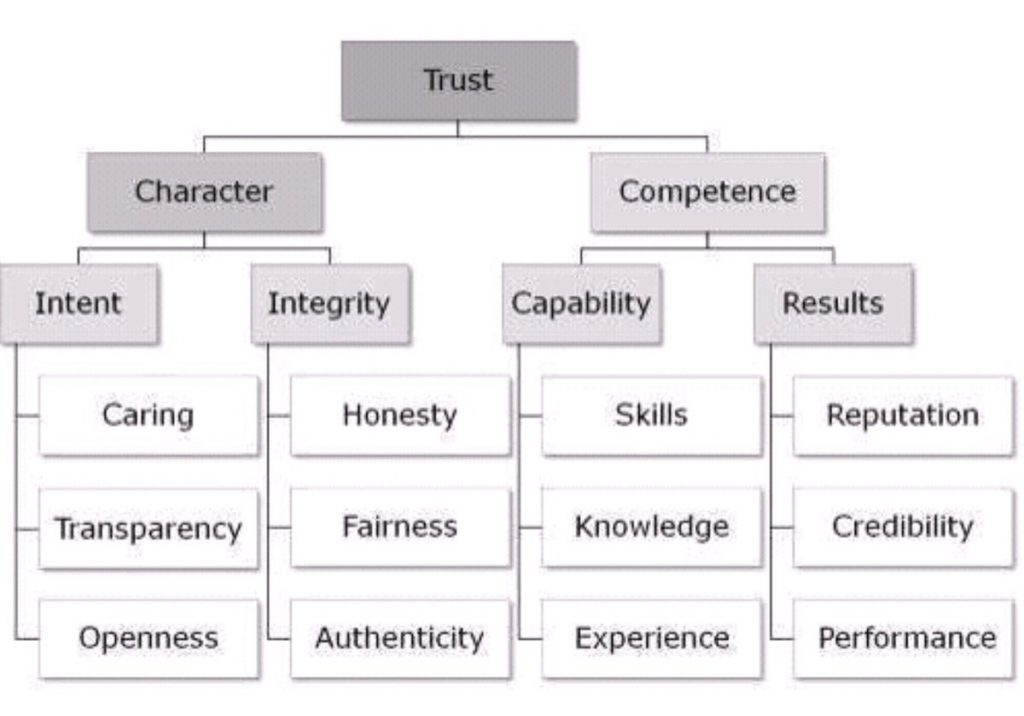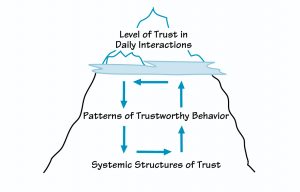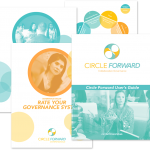
Picture by Vickey Chauhan
This is the first article in our series on the 8 Primary Principles of Collaborative Governance.
“Trust always affects outcomes—speed and cost. When trust goes up, speed will also go up, and costs will go down. When trust goes down, speed will also go down, and costs go up.” –Stephen M. R. Covey, The Speed of Trust
In his book, The Five Dysfunctions of a Team, Patrick Lencioni names an absence of trust as one of the fundamental causes of organizational politics and team failure. And, one of the key principles for putting Collective Impact into practice is to “build a culture that fosters relationships, trust, and respect across participants.” The research bears out the critical role of trust in performance, which is why trust is a core value in the Circle Forward governance system.
So what can you do if trust is an issue for your team or initiative?
With so much research on the connection between trust and performance, you would think most teams would make addressing trust issues their first order of business. It’s not, however, what I see most groups do when lack of trust is undermining results.
“We don’t have time for this”
Teams and initiatives want to get things accomplished. It’s messy to bring trust issues into the open. And, obviously, it’s hard for a group to trust that they will be able to work through the issues once they are on the table. As a facilitator and consultant, I’ve encountered groups who have burned themselves out because of their lack of confidence to work through conflict. Paradoxically, it is the ability to work through conflict that can build trust.
Every situation has its unique history and context, so I’m not going to advise a one-size-fits-all strategy in a blog post for dealing with trust issues. In general, however, if trust issues are bringing down performance in your group, it is time to talk about trust.
Re-establishing trust could be the most efficient way to spend your time together.
Assessing the Qualities of Trust and Mistrust
One of the first steps in any problem-solving process is to assess the situation before intervening. We call this “picture forming.” So, I do want to share a couple of frameworks for understanding the more precise nature of how and where trust is operating in your group, and how and where it is not. I find these frameworks useful for assessing the nature of trust in particular relationships, and even for assessing myself and my own strengths and weaknesses in different situations. Frameworks like these can be the start of a process of inquiry that allows groups to host difficult conversations they may need to have.
The first Trust Matrix comes from Stephen M. R. Covey’s book The Speed of Trust. In it, he breaks down trust into the factors of integrity, intent, capability, and results.

Group members can ask themselves the nature of the issue: do I trust the group’s intent, but not their ability to deliver results? Maybe I see that group members are very capable, but I don’t trust them to take my needs into account, or to communicate and be transparent along the way.
Another way to define trust comes from Klijn, Steijn, and Edelenbos, from their 2016 book, Governance Networks in the Public Sector. They undertook research on collaborative networks, and measured trust in networks on these factors:
- Agreement trust – The parties in this project generally live up to the agreements made with one another
- Benefit of the doubt – The parties in this project give one another the benefit of the doubt
- Reliability – The parties in this project keep in mind the intentions of the other parties
- Absence of opportunistic behavior – Parties do not use the contributions of other actors for their own advantage
- Goodwill trust – Parties in this project can assume that the intentions of the other parties are good in principle
Designing for Trust
While open and productive conversation about trust issues may be what is called for in certain situations, there is another layer that Doug Stilwell describes in his article, “Trust as a Systemic Structure in Our Organizations.” Looking through a lens of trust at all the interactions in an organization, using one of the frameworks above, will start to reveal the deeper patterns of behavior, or norms, just below the surface, that support trust or undermine it.
 Our governance and operating systems make up these systemic structures, which can include a set of formal protocols and procedures, as well as informal norms for behavior.
Our governance and operating systems make up these systemic structures, which can include a set of formal protocols and procedures, as well as informal norms for behavior.
The good news is, there are structures and norms that more reliably generate trust, and you can put them in place. This is why Circle Forward was founded – to focus on governance as a key point of leverage in systems change.
For example, when groups learn the tools for collaborative decision-making, they put into place processes designed to build trust. First, the processes encourage feedback from all people and all parts of the system, so issues get put on the table, rather than being swept under the rug. Second, the processes, applied properly, ensure many trustworthy characteristics are accounted for in the process, for example: transparency, fairness, and performance, to name a few. Changing how we make decisions and carry them out together doesn’t just address the symptoms of a lack of trust, it reorganizes systems at the root.
Assessing Your Systemic Structures
If you like the iceberg metaphor, you might also like a different metaphor somebody described to me once; he said a good governance structure is like a skeleton; it’s mostly invisible. When it’s working properly, it enables a wide range of motion and forward momentum toward your goals. Likewise, when it’s working in ways that are less than ideal, flexibility and forward motion are hindered…and one of the symptoms can be inefficiency due to lack of trust.
Our Rate Your Governance toolkit can help your group start a conversation about where your governance system is working well and where it can become stronger. Get it in your free Circle Forward Starter Kit. If you’d like to talk more, please contact us.

